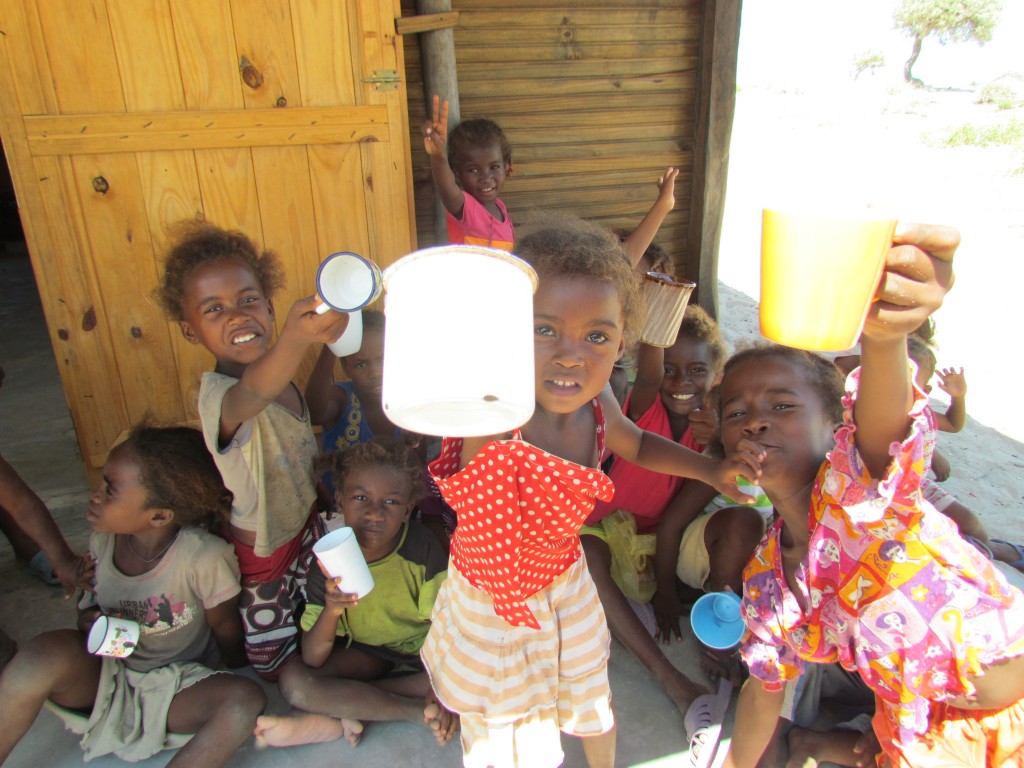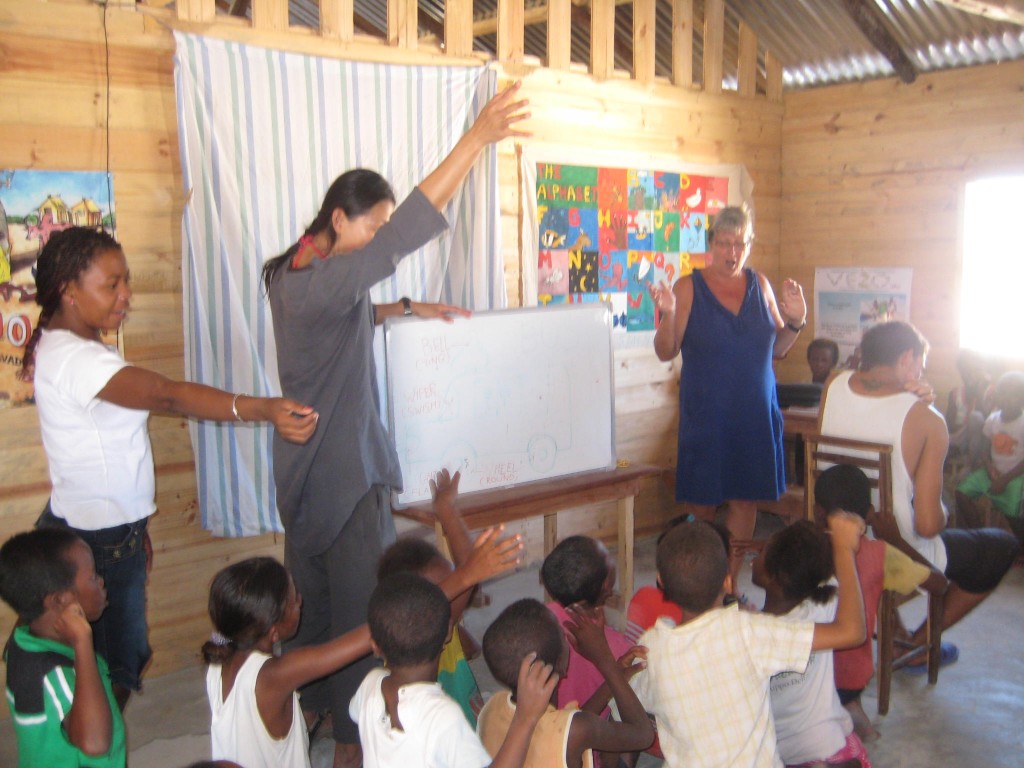by Christine Foulkes, BV volunteer, Madagascar
The walk to school was interesting. We negotiated the daily route leading down to the boats in the bay. Then we turned into the narrow passage way at the edge of the village, through a gap in the fence and over the first hill, still keeping the shiny metal roof of the school in sight. We crossed the main path scattering goats along the way and saying ‘Salama’ to everyone we met. The deep sand made it heavy going and the rising temperature didn’t help either.
Once we rounded the corner we saw two beautifully constructed wooden huts, their structure quite different to those found in the village. One was the clinic and the other, the school, both built from UNESCO funding. At first we thought no one was there and then the cry went up ‘Vazaha!’ (foreigners in Malagasy). Suddenly over a hundred children aged between 2 and 10 years old appeared from the shade of the clinic and came towards us, cup in hand.
It was quite a sight. Their smiles were huge and everyone seemed to want to touch or be in close contact with us all. Little hands were everywhere and the cry for ‘photo’ was constant. Older children were shouldering their younger brothers or sisters. Some were more reserved and kept their distance but were intrigued by our sudden appearance in their school.
Gradually we made our way into the classroom. Every space was filled; benches, tables and the floor. It was quite a feat not to stand on anyone. We taught the little ones ‘The wheels on the bus go round and round’ and ‘If you are happy and you know it’ complete with actions. The songs went down well. We had no idea if they understood but it was fun trying.
Outside we really went for it. First we, the ‘BV Volunteers’, demonstrated it and then all 100 tried – ‘The Hokey Cokey’. It was difficult to tell who enjoyed it the most, the volunteers, the Malagasy staff or the children? We organised the children into small groups initially then we merged all 100 together as the end. There were tumbles and a few scrapes but mostly there were squeals of delight. We finished every subsequent session with this activity! Over the remaining weeks we repeated these songs and even managed to fit the ‘Hokey Cokey’ into the Beach Clean Up activity.
With the older children we read from an English story book. They liked shouting out the answers to the questions linked to the story. Even the local classroom assistants joined in. It helped that the key words had been translated into Malagasy.
In the ‘Connecting Classroom’ sessions the teenagers were able to show off their good command of English. We looked at photos, chatted about families and drew up family trees. Other sessions included looking at British flowers comparing them to local ones and writing up their findings. Copying from the board was a key exercise and checking their use of written grammar a significant feature of their learning. It was a humbling experience where so little was appreciated by such a serious group of young people.
Going into the school was a great volunteer activity. It was an eye-opener. Older children were responsible for the younger ones. They made sure they got their drink and food at the end of the morning. No adults walked them home or checked on them. There was no need as everyone knows everyone here in Andava. There was a genuine desire with the older children to learn. It was clear that BV played a definite role in the community. And on a personal note, I got chance to do what I like best – teach and have some fun.
.




